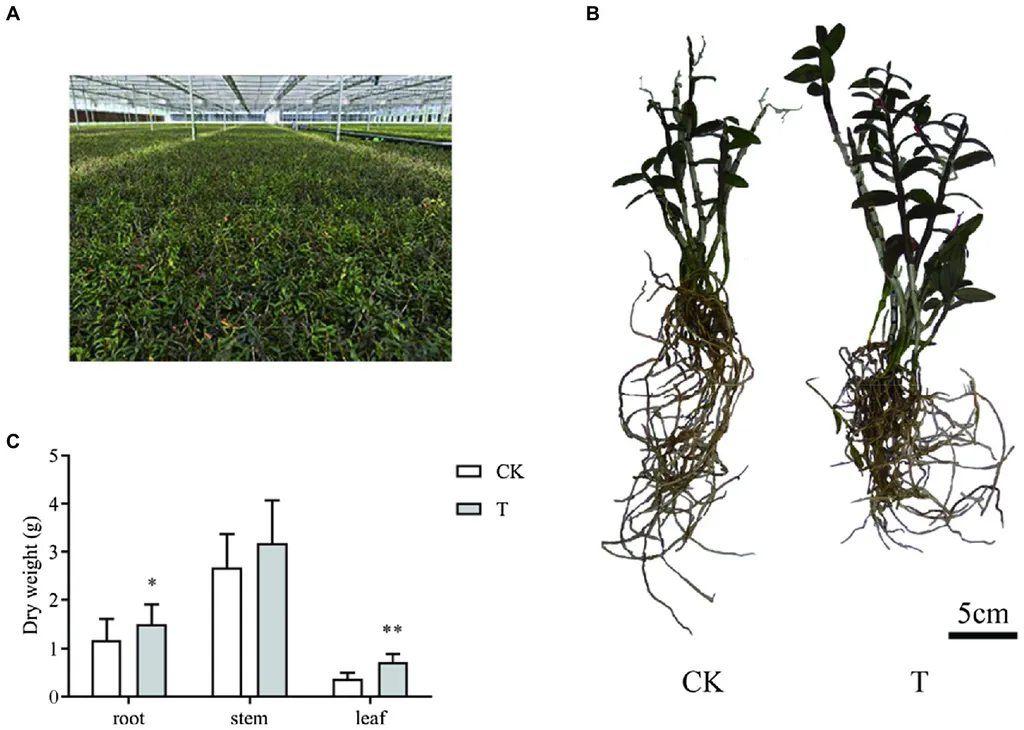In the intricate dance of plant-fungal symbiosis, a new study published in *Plant Communications* (also known as *Plant Communication*) has uncovered a fascinating partnership that could reshape our understanding of nitrogen utilization and plant development. The research, led by Qing-Song Yuan of Guizhou University of Traditional Chinese Medicine, delves into the relationship between the fungus Mycena and the fully mycoheterotrophic plant Gastrodia elata, revealing how the fungus compensates for the plant’s genetic deficiencies.
Gastrodia elata, a plant that relies entirely on its fungal symbiont for early growth and seed germination, has lost key genes involved in nitrogen utilization and indole-3-acetic acid (IAA) biosynthesis. These genes, however, are retained in Mycena. The study’s genome-scale analysis showed that during the symbiotic germination of G. elata seeds, Mycena significantly upregulates genes involved in nitrogen and tryptophan-dependent IAA biosynthesis. This suggests that Mycena is not just a passive partner but actively supplies essential nutrients and hormones that G. elata lacks.
“Our findings provide novel insights into the mutualistic symbiotic relationship between Mycena and G. elata,” said Qing-Song Yuan, the lead author of the study. “The fungus Mycena compensates for the incomplete nitrogen metabolism of its plant partner and supplies IAA, thereby promoting seed germination.”
The study also found that disrupting key enzymes in Mycena’s nitrogen assimilation and IAA biosynthesis pathways, such as nitrite reductase (MyNir) and amidase (MyAmid), significantly impaired the symbiotic germination of G. elata seeds. This disruption led to energy supply issues, cellular restructuring, and altered hormonal signaling crosstalk, highlighting the critical role of Mycena in G. elata’s development.
The implications of this research extend beyond the realm of botany. Understanding these symbiotic relationships can have significant commercial impacts, particularly in the energy sector. For instance, optimizing plant-fungal symbioses could enhance bioenergy crop yields, making them more efficient and sustainable. This could lead to advancements in biofuel production, contributing to a greener energy future.
Moreover, the study’s insights into nitrogen utilization could inform agricultural practices, potentially reducing the need for synthetic fertilizers and promoting more sustainable farming methods. By harnessing the power of natural symbioses, we could develop more resilient and productive crops, benefiting both the environment and the economy.
As we continue to unravel the complexities of plant-fungal interactions, the potential for innovation and discovery is vast. This research not only sheds light on the intricate dance between Mycena and G. elata but also opens up new avenues for exploration in agriculture, bioenergy, and beyond. The future of plant-fungal symbiosis research is bright, and the possibilities are as boundless as the natural world itself.

